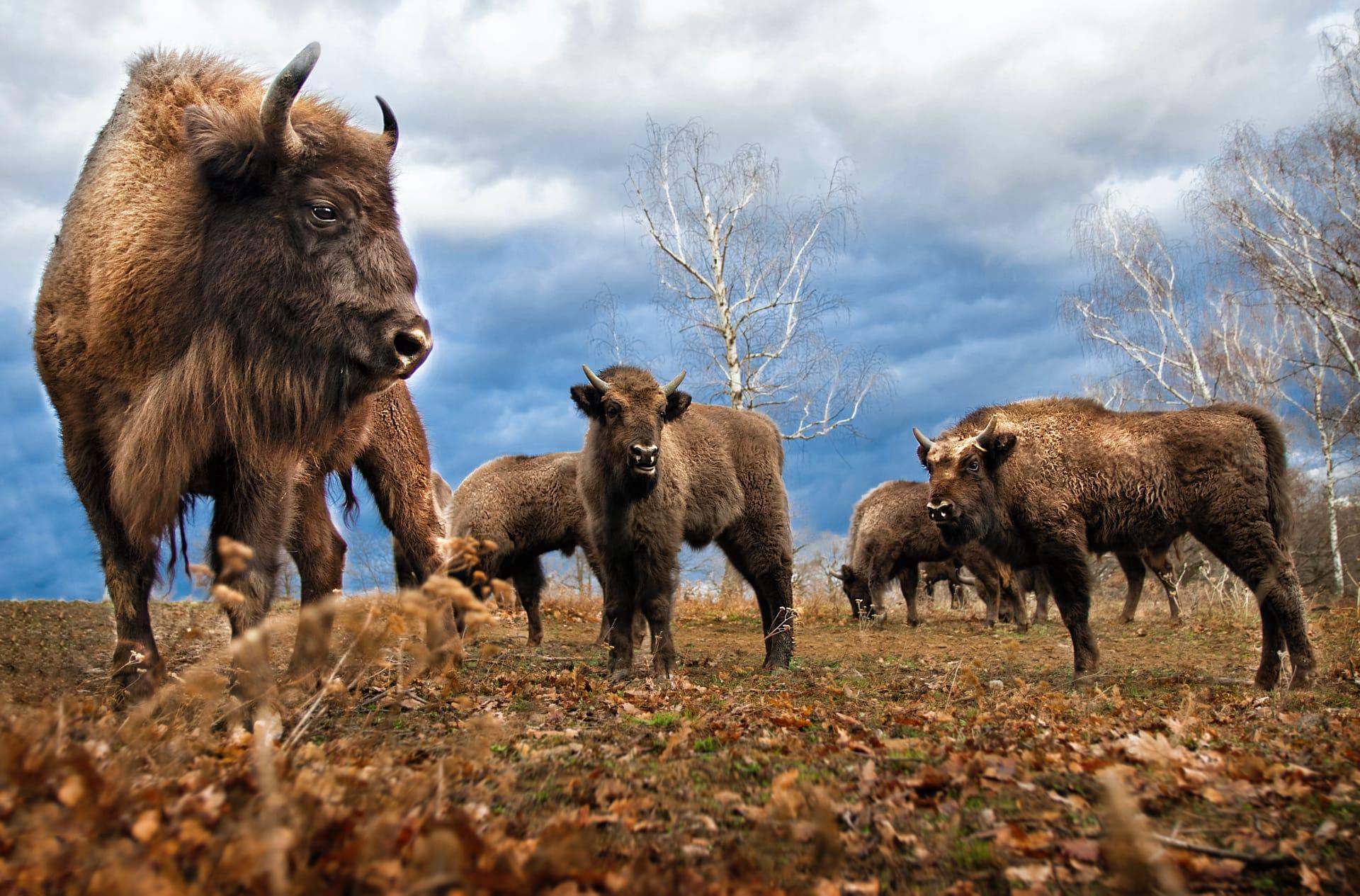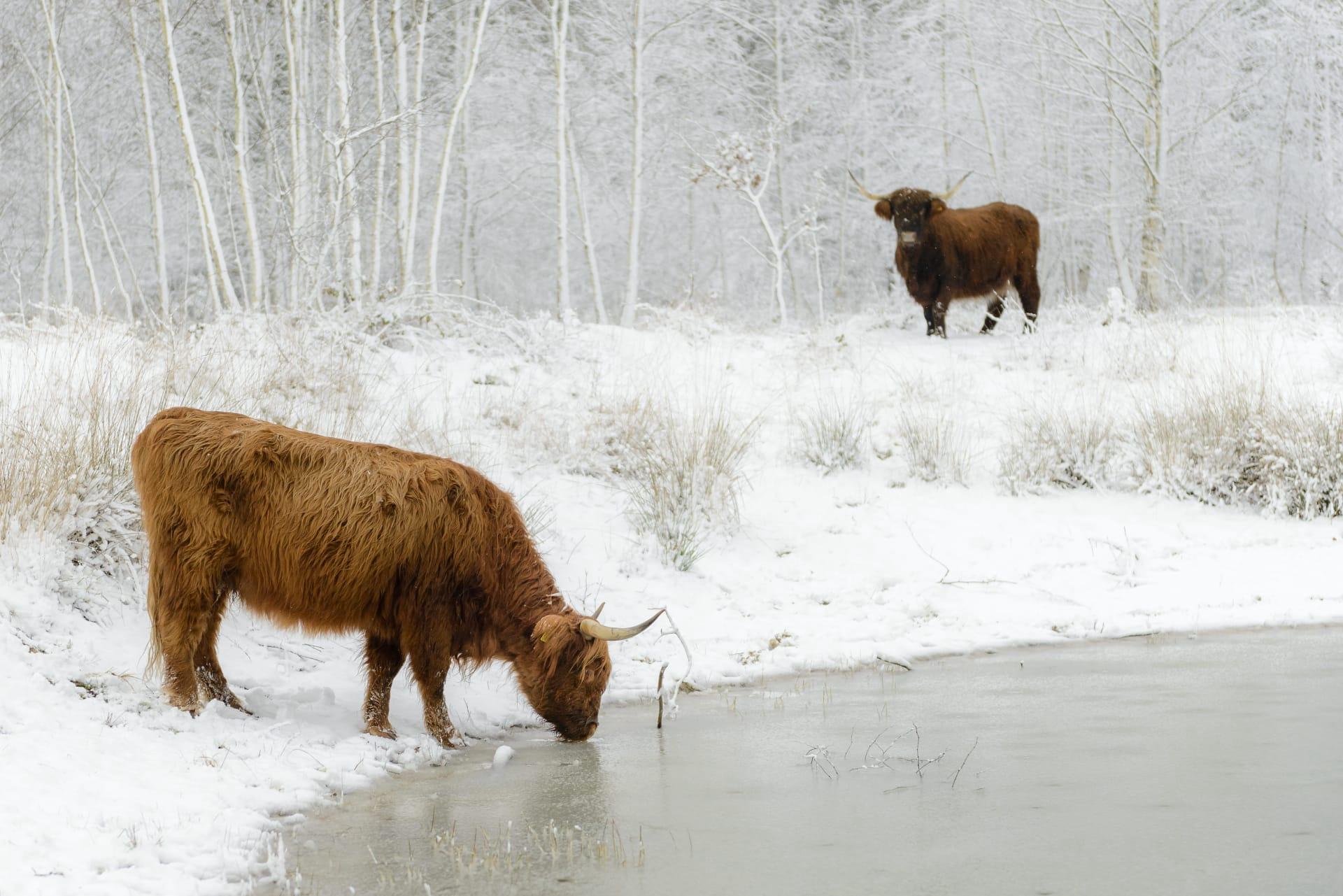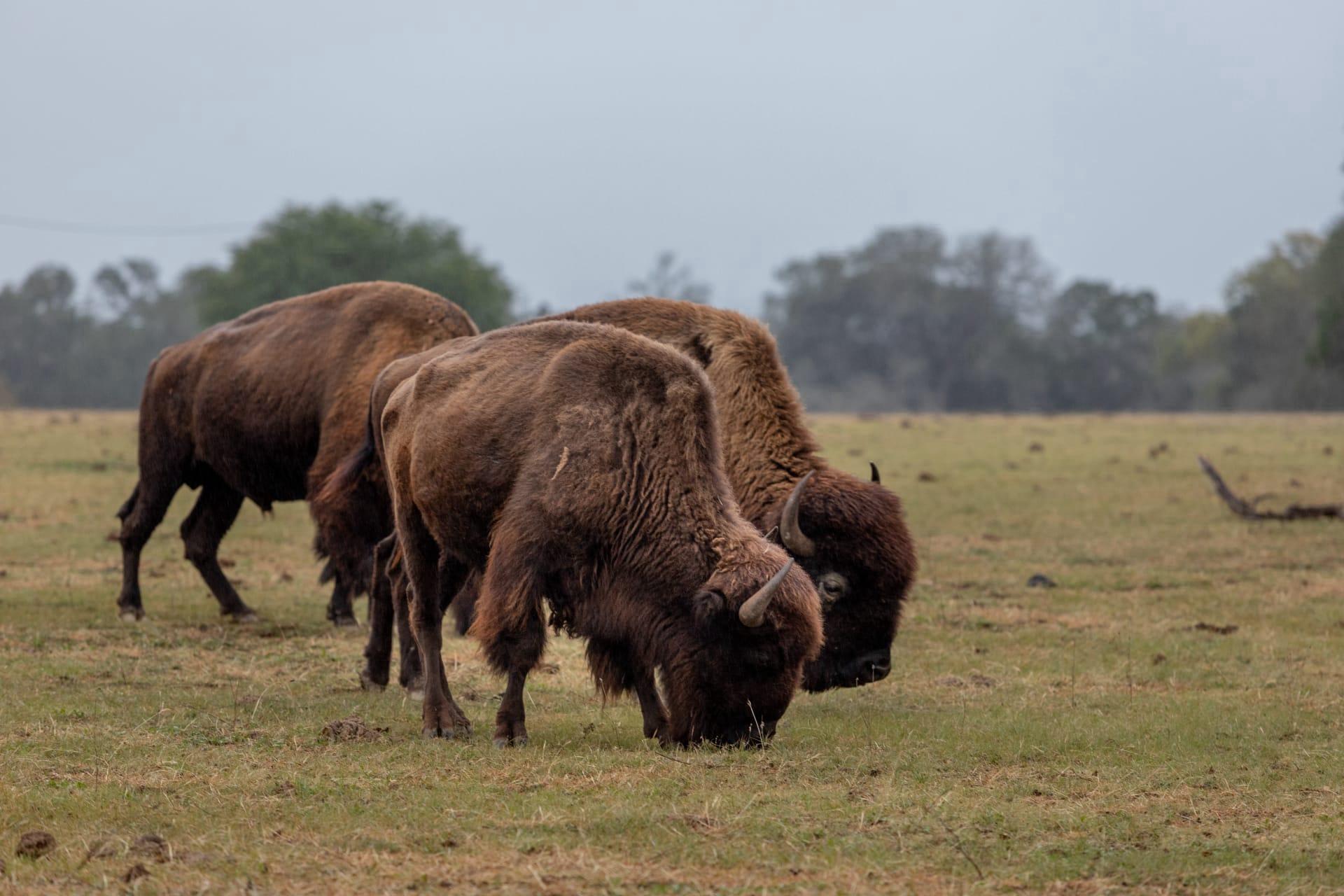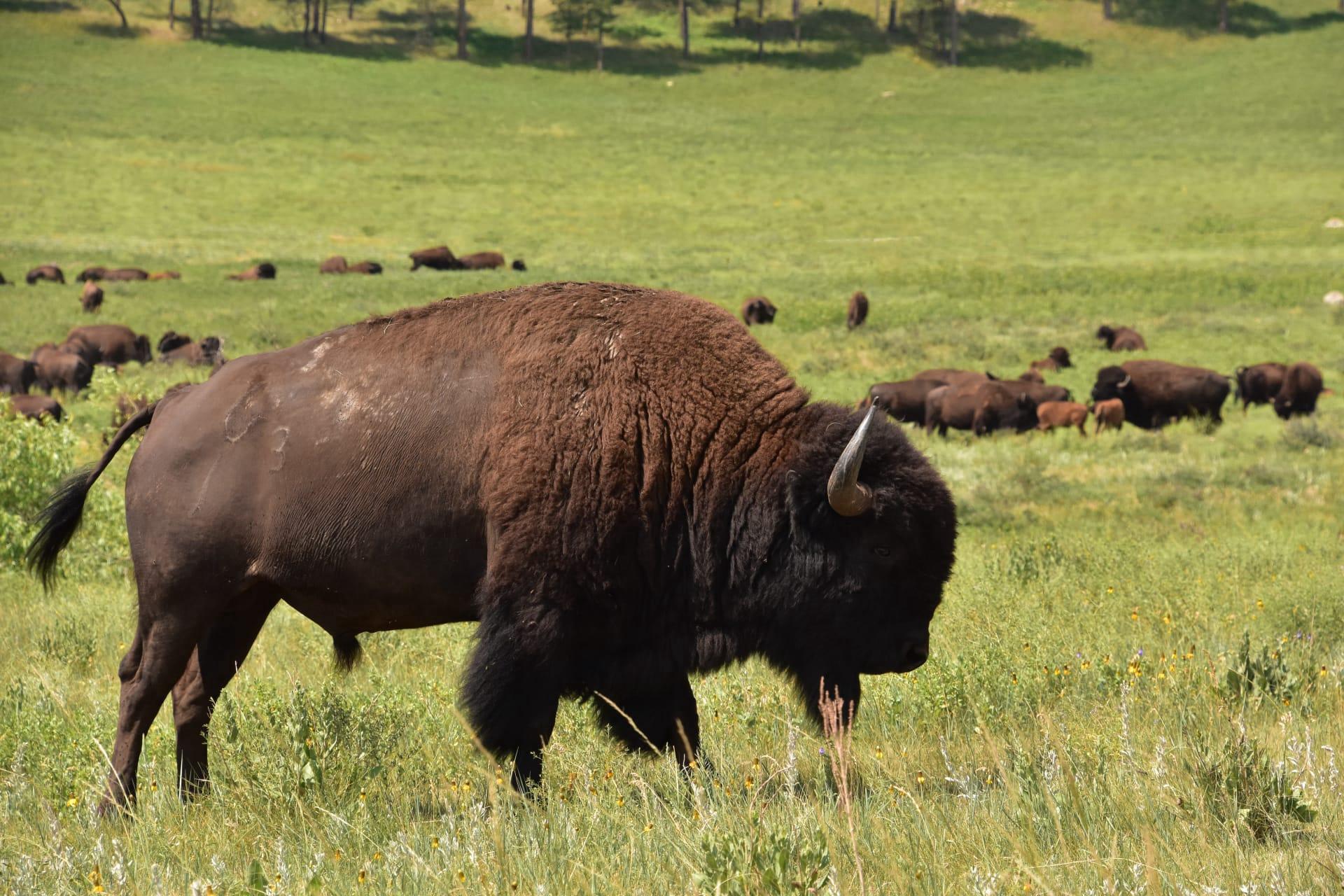American Bison Trivia
- Home /
- Trivia Question /
- Animal /
- American Bison Trivia
1
Question: What is the average weight of an adult American Bison?
Answer: Adult American Bison are hefty creatures. Males, known as bulls, typically weigh between 1,000 to 2,200 pounds (450 to 1,000 kilograms), while females, called cows, are lighter, averaging 800 to 1,200 pounds (360 to 540 kilograms). Their size is a testament to their status as one of the largest land animals in North America.
Question: How fast can American Bison run, and how does this benefit them in the wild?
Answer: Despite their massive size, American Bison are surprisingly agile and fast. They can reach speeds of up to 35 miles per hour (56 kilometers per hour). This speed is not just for show; it's crucial for outrunning predators and navigating through their rugged habitats. It's a remarkable display of power and agility from such large animals.

2
Question: Is it true that American Bison and buffalo are the same animal?
Answer: This is a common misconception. American Bison are often called buffalo, but they are distinctly different from true buffalo species, like the African Cape buffalo and the Asian water buffalo. The main differences lie in their physical features: American Bison have a hump at their shoulders and larger heads, while true buffaloes don't have these characteristics.
Question: Do American Bison still roam freely in vast numbers across North America like in the past?
Answer: While it's true that American Bison once roamed North America in massive herds, their numbers drastically decreased due to overhunting and habitat loss in the 19th century. Today, they are primarily found in protected areas and reserves. Efforts to conserve and reintroduce them to their native habitats are ongoing, but they no longer exist in the vast numbers they once did.

3
Question: What is the lifespan of an American Bison in the wild?
Answer: American Bison can live up to 20 years in the wild. However, their lifespan can vary based on factors like habitat conditions and predation. In managed care or zoos, they may live longer, often up to 25 years, due to the absence of predators and access to regular medical care.
Question: How do American Bison communicate with each other?
Answer: American Bison have a range of vocalizations and physical cues for communication. They use grunts, snorts, and bellows to express various emotions and intentions, from courting to signaling danger. Body language, such as head bobbing, tail positioning, and rolling on the ground, also plays a crucial role in their social interactions.

4
Question: What is the significance of the American Bison's woolly coat?
Answer: The American Bison's thick, woolly coat is essential for survival in harsh climates. It provides insulation during cold winters, protecting them from freezing temperatures. The coat has a dense layer of underfur and a coarser outer layer of guard hair. In spring, they shed this heavy coat to adapt to warmer weather.
Question: How does the diet of American Bison impact their ecosystem?
Answer: American Bison are primarily grazers, feeding on grasses and sedges. Their grazing patterns play a crucial role in shaping the prairie ecosystem. They help maintain healthy grasslands by stimulating new plant growth, dispersing seeds through their dung, and creating habitat spaces for other wildlife species.

5
Question: Can American Bison swim?
Answer: Yes, American Bison are quite capable swimmers. They can cross rivers and lakes when migrating or searching for food. Their large bodies and strong legs help them navigate through water, demonstrating their adaptability to various environments.
Question: What are the primary threats to the American Bison population today?
Answer: The main threats to American Bison include habitat loss, diseases from domestic cattle (like brucellosis), and limited genetic diversity due to small population sizes. Conservation efforts focus on habitat preservation, disease management, and genetic diversity maintenance to ensure their survival and the restoration of their historical range.